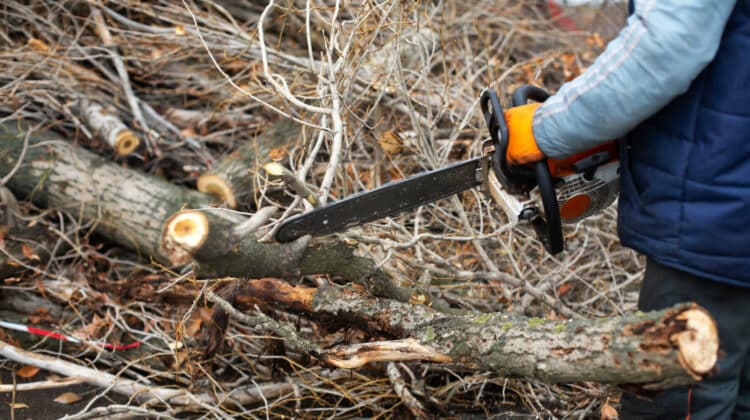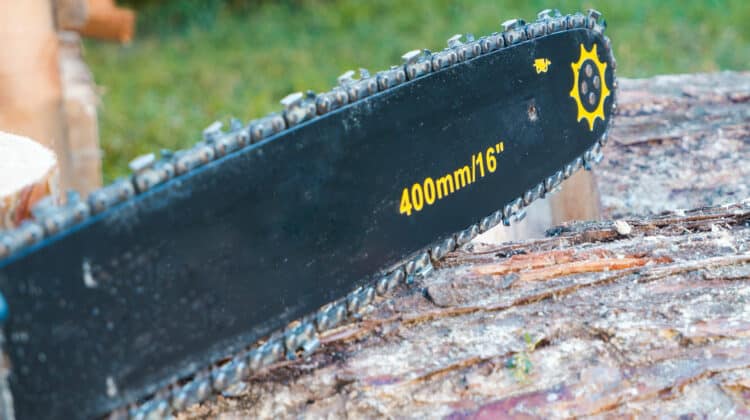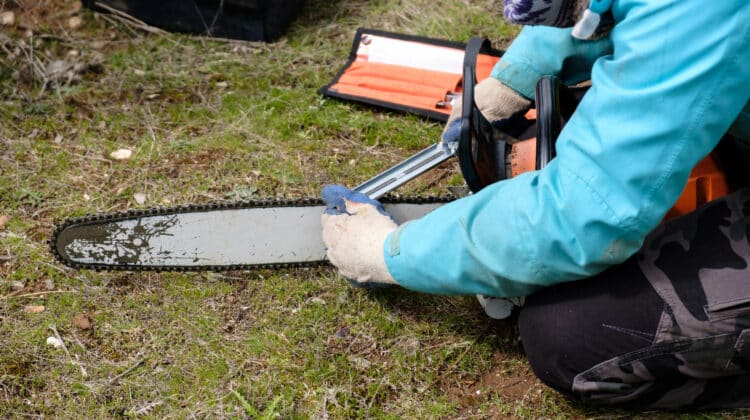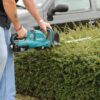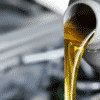
Is your chainsaw not cutting straight? Are you losing your mind in finding out the right ways to repair it?
It all happened as you tried sawing off an old tree stump in your front yard. As you switched it on and proceeded to saw the first few inches of the stump, it began pulling by itself to the left and right, like it had a life of its own.
You went through a range of emotions after it did the deed: flabbergasted, alarmed, and quickly becoming ticked off. You can’t seem to find the answer to the dreaded question: Why does my chainsaw cut crooked?
Don’t let those negative emotions overcome you. If something is wrong, it means there are ways to fix it.
You should also know that this is a fairly common issue for chainsaws. You also might have heard of the many explanations why this happens, and a lot of them are not exactly correct.
To set the record straight, if your chainsaw won’t cut straight, there’s only one of two things going on:
- Your chainsaw chain isn’t sharp on one side.
- It’s bar edges are not even.
There a few ways why these have occurred. You’ll go through each reason and find out what’s going on with your chainsaw.
Before anything else, you might think it might be from a bump or bend in the bar of your chainsaw, but it’s not the case. If you think about it, you won’t be able to saw off a log if the bar is bent. As a result, the chain will be thrown off.
Table of Contents
Why is my chainsaw not cutting straight?
A. Your chain is not sharp on one side
One of the common chainsaw faults is that one side isn’t sharp. It may be the reason why it’s pulling you in one direction and cutting the wood unevenly. Experienced users may be aware of this issue already.
There are a few reasons why your chainsaw won’t cut straight, and one of them is an uneven chain.
A scenario like this might have happened to you:
You’re in the middle of going through a felled tree, and once it went through, you accidentally hit it on a patch of dirt. The ground you’ve hit had rocks on it.
Hitting rocks damage the chain in a way that you don’t notice until it is too late. If this always happens, it will continually wear down only one side of the chain and leaves the other side undamaged.
If you’re asking yourself, why won’t my chainsaw cut straight, you should remember if you’ve hit it on the ground or something hard. If you did, then the issue is decidedly in the chain, which is unsharpened on the other side.
There is also another reason why the chainsaw doesn’t cut on one side. It’s because sharpening it wasn’t done properly but lopsided. Sharpening it is a delicate process with a file, and perhaps one side was ground more intense than the other, resulting in an irregular cut.
To reiterate, the answer to the question: Why does my chainsaw cut crooked, is either from:
- By accidentally hitting something hard like a rock or concrete.
- By lopsided sharpening.
If you surmise that either of the two isn’t the problem, go to section B below. Otherwise, here’s how you can fix an uneven chain.
If the dullness is only minor, then you can easily fix it by using a file to sharpen the chain until it is even. The chain has links on both sides, which is called the guide link and a cutter link.
There are small lines on those two links and whose purpose is to indicate the area where you can’t sharpen it anymore. It’s for how much metal you can remove.
The line is to compare how far the links should be filed down. If you out that there’s a big difference in the links that you couldn’t file manually, then you have to bring it to a professional chainsaw sharpener to it sharpened.
If you find breaks and chips in the chain, then you have to get a new chain.
There are also ways to keep an uneven chain from happening.
After going through the first part of the repair process by sharpening or replacing it entirely, you have to keep it that way. The best way to do it is to stay clear of how it was damaged as mentioned above.
It means you have to be extra careful not to hit anything hard like rocks or dirt with the chain. It may still happen once in a while, but being cautious is already planted in your head.
If you are cutting logs close to the surface, keep in mind to stop six inches from the ground, then roll it over to finish. If it can’t be moved or rolled over, try to keep it level to the ground to impede any contact to the surface.
To keep uneven sharpening from occurring to your chain is to use a guide when you start filing. Be mindful of employing equal pressure when you sharpen on each side. It’s a learned skill, which you’ll get used to as time passes.
B. Its bar edges are not even
What makes a chainsaw cut crooked? Another reason is the uneven edges of the saw bar.
After constant usage and wear and tear, the chainsaw bar edges will eventually become uneven. There is steel-to-steel friction going on between the chain and bar, and metal will wear away.
Some factors determine which side loses more metal, like the way the tree is leaning, your dominant hand, and many others.
Experienced chainsaw operators have a trick to make each side wear out together. They do this by regularly flipping the bar, to balance out the usage.
If you haven’t done this to tour chainsaw, then the one bar edge is more likely shorter than the other on each side of the groove.
There’s a way to fix an uneven chainsaw bar.
If your chainsaw won’t cut straight due to an uneven bar, what you can do first is to use a file to repeatedly scratch off the edges. As you do this, be sure to hold it evenly.
This procedure should be part of what you usually do to maintain your chainsaw. There are specially made files for chainsaw sharpening available in hardware stores, so get one now to make sharpening a regular maintenance routine.
That is a better alternative instead of going to a saw shop to have its edges scraped off. Doing it that way will be less expensive for you in the long run.
There’s also a way to keep an uneven bar from happening.
A good practice that you can do every time you refuel the chainsaw is to flip the bar. This way, one essential thing will remind you to do this other crucial procedure, and you’re hitting two birds with one stone.
Here’s how you can do it:
- First, take put the front panel.
- Then lift off the bar from the saw.
- Remove the chain from the bar.
- Lastly, flip over the bar and put everything back as it was before.
Keep the bar clean
The bar of a typical chainsaw usually gets dirt, oil, and sawdust trapped in it. So you need to remove whatever junk is stuck in there to make it function properly.
To get all the rubbish unstuck in the bar, get a gauge tool and slide it along the furrow. Also, make sure you didn’t miss the oil hole, which usually gets grimy all the time.
The gauge tool can get through the hard-to-reach corners of the oil hole on both sides. This process will enable the chain to run smoothly and without any issues. It can also keep the saw from overheating and smoking.
Other tips and tricks
- Add oil- Get a good quality chainsaw sharpener to use and add one drop of oil on the carbide shaft. It will enable it to spin freely within the guides. You can also use the bar for the process. You can prevent build-up from accumulating by blowing away the steel shavings.
- Uniform teeth- You can check if the teeth are in uniform length with an adjustable wrench. Adjust it to be the same size as the cutting teeth and compare it to the others. If the lengths are different, then you have to fix it.
- Level sharpener- When using the chainsaw sharpener, one mistake users make is not leveling it properly. As it rocks on the carbide, attempt to level in flat and tighten the screws on the side.
Then take out the carbide, pull the chain, and test if it moves freely. If it won’t fit, loosen the screws on the side and make the sharpener move up and down to allow the carbide to slip in. - Keep sharp one side and adjust the rear screw- Depending on how thick the bar is, you may need to sharpen the teeth on the right side first, then doing the left. The bar’s thickness may change the carbide’s path and make off-center the intersection point.
To fix it, sharpen one tooth at a time and adjust the thumbscrew so that the same metal scrapings are removed, like on the first side. You only need to adjust the thumbscrew once.
Conclusion
The bottom line is: always handle your chainsaw with care. If it’s not cutting straight, you did something wrong. However, you now know how to fix it. Be sure you have the proper tools to fix it and adhere to a regular maintenance schedule.
